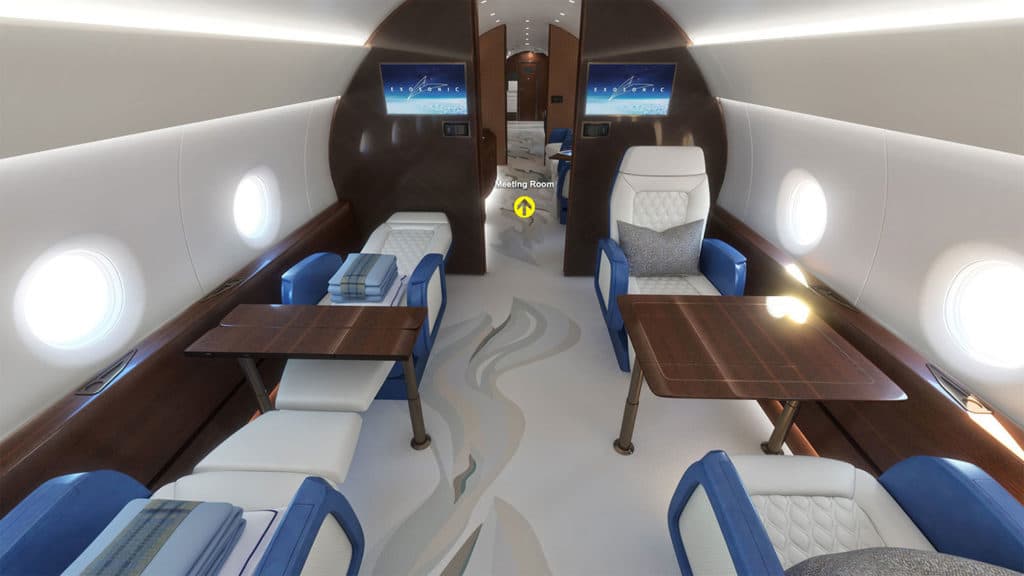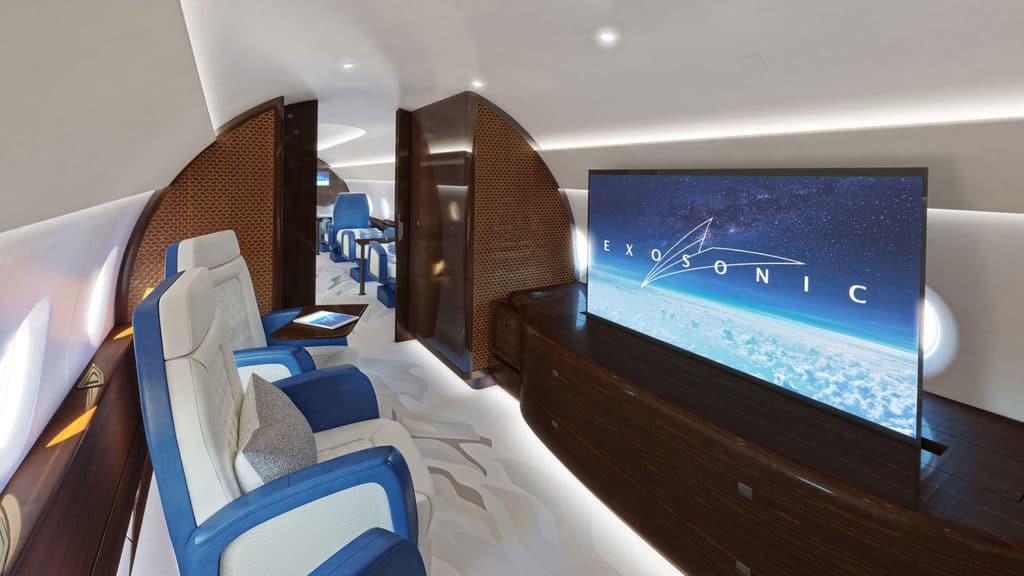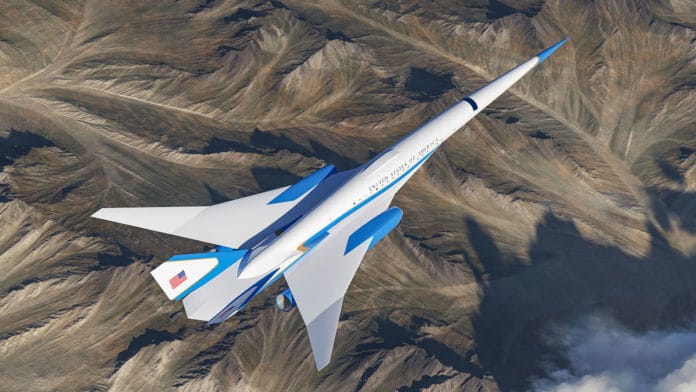Last year, a California aerospace startup Exosonic announced that it is working with the US Air Force on developing a supersonic plane, which could be used as Air Force One around 2030. The jet could be used to carry the US Executive Branch’s distinguished visitors (DVs) around the globe at nearly twice the speed of sound and cut travel time in half.
Exosonic received a contract from the Executive and Presidential Directorate of Air Transport (PE) after impressing the military with its concept for a low-boom supersonic Mach 1.8 twinjet.
The luxurious 31-passenger supersonic jet is based on a larger 70-passenger commercial airliner. The plane has all the bells and whistles that one might expect on a plane to be used by the likes of a US president or vice president. It has luxury leather, oak, and quartz fittings, private suites for work and rest, and all at cruise times twice that of existing aircraft.

“With this concept, we are planning to implement new technologies that are not available today or that you don’t (yet) see on commercial or business aircraft,” Stephanie Chahan, Exosonic’s principal aircraft interior designer, told CNN during a virtual walk-through.
The first of two private suites fits three passengers and includes the ability to video teleconference securely in-flight. Its rotatable leather seats are clad in luxurious wooden shells and feature storable video monitors.
A second suite for senior staffers and guests fits eight passengers who can work collaboratively and rest. It has seats that lie flat to allow passengers to sleep on board. The main cabin has 20 business class seats, two galleys, and plenty of stowage space. The seatbacks have spaces for holding personal electronic devices rather than traditional seatback monitors.

According to its designer, the supersonic jet would have a range of 5,000 nautical miles or more than 9,200 km. Thanks to the boom-softening techniques, it should be able to fly over land at almost twice the speed of sound without disturbing residents below. This is 1,381 mph (2,222 km/h), or 1.8 times the speed of sound, and more than twice the typical cruising speed of a long-distance commercial craft.
“The future for global rapid passenger travel is low-boom supersonic flight,” Exosonic’s CEO, Norris Tie, told CNN. “Low boom allows travelers to fly at supersonic speeds without generating disruptive booms for those on the ground.“
Exosonic believes that low-boom supersonic flight will be the next inflection point in commercial aviation, allowing people to fly around the world in roughly half the time. The company expects its supersonic plane to be flying by the mid-2030s.
